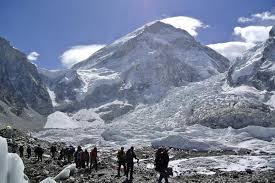Suture Zone in the Himalayas has become Tectonically Active
The study conducted by scientists from Wadia Institute of Himalayan Geology says that the suture zone of the Himalayas has become tectonically active.
Key Findings
The scientists have observed that the thrust is broken, sedimentary beds are tilted. Bedrocks are showing brittle deformation and the rivers are associated with the uplifted terraces. The scientists used the technique of Optically Stimulated Luminescence to make these observations.
The findings say that the Suture Zone of the Himalayas has been active in the recent years of the earth history. This is one of the several reasons for the recent frequent earthquakes in the northern India.
The scientists have estimated it as 78,000 to 58,000 years. According to them, the recent 2010 earthquake of low magnitude 4.0 in the village of Upshi was due to thrust rupture.
Findings about the Himalayan Thrusts
Himalayas are made of three thrusts namely Main Central Thrust, Main Frontal Thrust and Main Boundary Thrust. According to the study, Main Frontal Thrusts are locked and the overall deformation is occurring in the Main Frontal Thrust.
The study also says that there is a remote fault zone in the suture zone that is tectonically active.
What are Thrusts?
Thrusts are faults. Faults are gently curved or fractures in the rocks of the Earth’s crust.
Suture Zone
It is joining together of two fault zones. It is usually found in mountain ranges.
Himalayan Suture Zone
It is also called Indus Suture Zone or Indus Yarlung Tsangpo Suture Zone. It is the zone of the collision between the Indian Plate and the Ladakh Batholith.
Tectonic Activity in the Suture Zone
The Ladakh plateau and the Karakoram range lie to the north of the Indus Suture Zone. They are originally formed as a part of the European plate. This zone has now become active according to the study. While the regions of Jammu and Kashmir, Uttarakhand, Sikkim, Himachal Pradesh are still known to be tectonically active and are moving.
Month: Current Affairs - October, 2020


